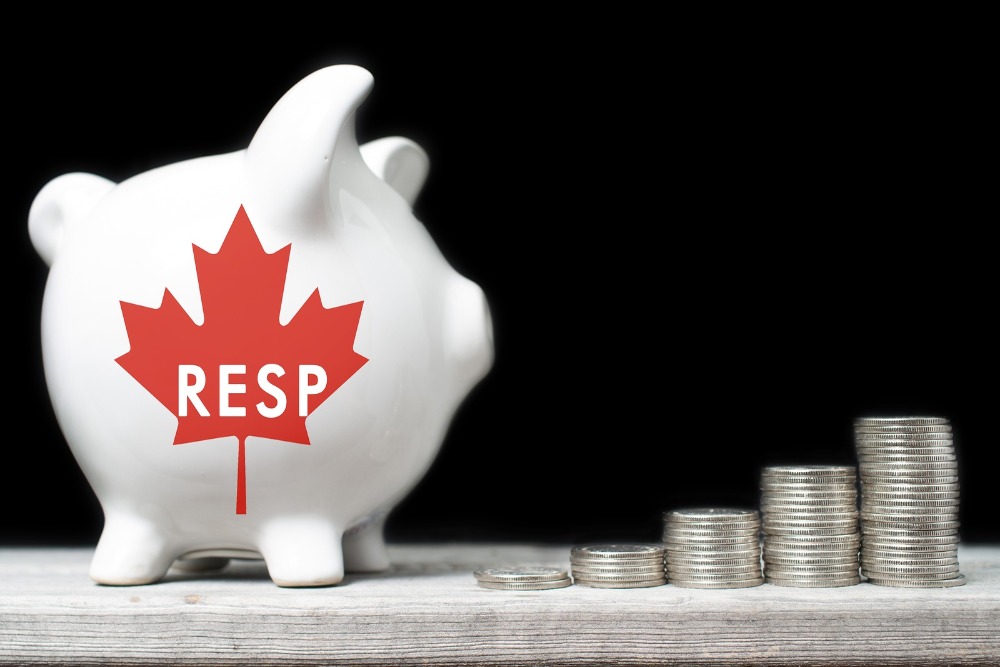The article “What To Do With Unused RESP Money” was originally published on February 21, 2017 on MoneySense.
Kevin has $54,000 in an RESP but his children have completed their educations. Now what?
Q: My wife and I have a son aged 25 years old and a daughter age 27 years old who have both completed college and are both now living on their own and working full-time. We saved and used only a portion of the money that we had contributed to a family RESP to assist them with tuition and living expenses while they attended college.
We now realize our children will not be pursuing further education and we still have $54,000 in the RESP.
What are our options to reduce tax implications when we withdraw or transfer the money from the RESP to another investment account? Neither myself or my spouse has any available RRSP room. Further, is there anything we can do at this time to minimize the penalties or clawbacks the CRA will impose as a result of us not using all the RESP money for the original intended purpose?
—Kevin
A: It sounds like you and your wife have a good Registered Education Savings Plan (RESP) problem, Kevin. I’d rather have too much in my RESP than not enough. Most parents are in the latter situation. But now that you’re in this situation let’s look at your options.
First off, an RESP can stay open for 36 years. You have to close it by the 35th year after you opened the account. So given your children’s ages, it sounds like you have a few years to make a decision, but depending on your circumstances, you may be better taking action now as opposed to waiting.
An RESP balance at any time is made up of three components – principal (your contributions), grants (like the Canada Education Savings Grant / CESG, Canada Learning Bond / CLB or various provincial grants) and income (interest, dividends or capital gains earned on your principal and the government grants).
When you take an eligible withdrawal from an RESP, Kevin, the principal – sometimes called a capital withdrawal – is received tax-free. Any non-capital withdrawal is taxable to someone or potentially repayable to the government.
When a beneficiary is attending an eligible post-secondary institution, the taxable grants and income are taxed on their tax return. These withdrawals are collectively referred to as Education Assistance Payments (EAPs).
Once you don’t have any eligible beneficiaries for an RESP, your principal can still be withdrawn tax-free, so you may want to withdraw your capital sooner rather than later, Kevin. It may be counterintuitive to leave this money in the RESP to continue to grow depending on your circumstances.
Any unused government grant money – the CESG, CLB or provincial grants – is repaid to the government.
The remaining income portion of the RESP – called an Accumulated Income Payment (AIP) – is taxable to you. But in addition to the tax you will pay at your regular marginal tax rate, you will also pay an additional penalty tax of 20%. For a high-income earner, tax on AIPs could be as high as 74%.
This reinforces the importance of planning ahead with your RESP. It may make sense to take withdrawals in excess of your share of a child’s education costs, to at least take back some of your principal. RESP withdrawals are subject to certain limits depending on the plan and the program your child is enrolled in, so check with your RESP provider.
If you or your spouse has RRSP room, you can transfer the AIP directly to an RRSP to avoid taxation subject to a limit of $50,000. But since you mentioned that neither you nor your spouse have RRSP room, Kevin, this may not be an option. If either of you is still working, you might consider stopping RRSP contributions to allow your contribution room to grow to take advantage of the AIP transfer. If you’re both in pensions or both retired, your RRSP room may be little to none and the right strategy may be timing the AIP withdrawals if you can control your other sources of income and take withdrawals in a low-income year or over a couple of years.
Another option with a family RESP like the one you have is to add another child to the plan who is related to you by blood or adoption. Government grants can only be used for new beneficiaries who are siblings of the original grant recipient but adding a niece or nephew, for example, could allow you to use the AIP without paying your marginal tax rate plus the 20% penalty tax.
The financial institution where your RESP is held will be responsible for determining what portion relates to capital, grants and income, Kevin. So start by figuring out what portion can come out tax-free, what amount will be repaid to the government and what AIP money is either taxable to you, available to a related child or able to be transferred to an RRSP.
Jason Heath is a fee-only, advice-only Certified Financial Planner (CFP) at Objective Financial Partners Inc. in Toronto, Ontario. He does not sell any financial products whatsoever.

